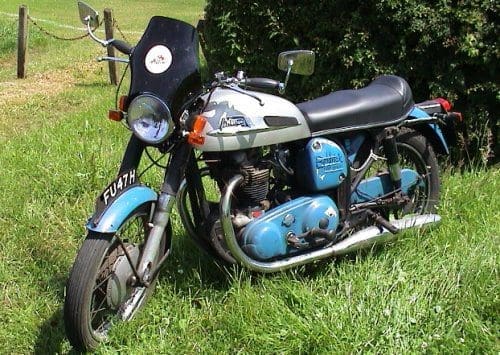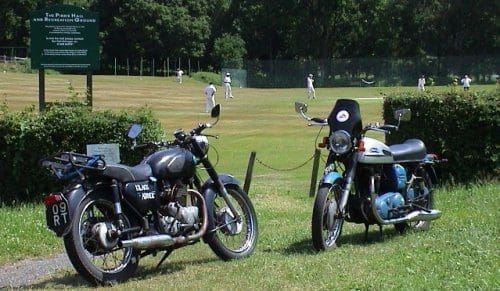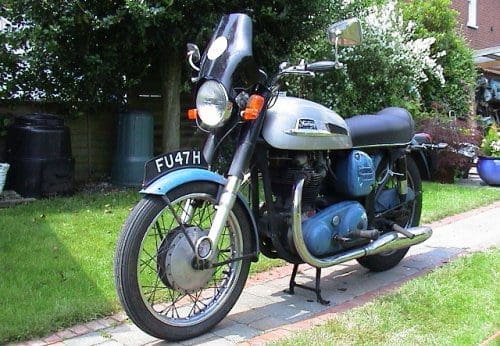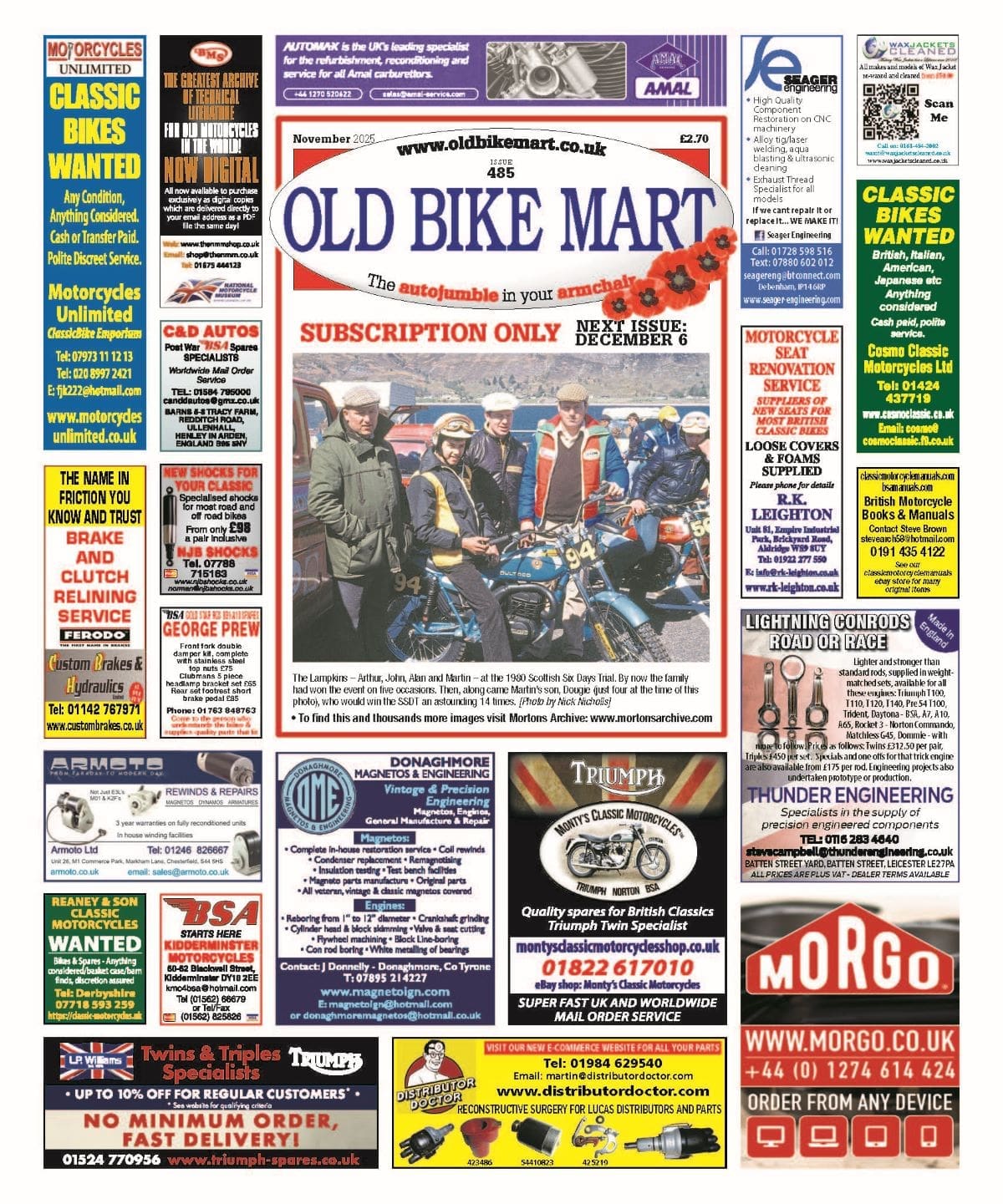John Blades always dreamed of owning a Norton Featherbed twin. And now he does: the last of the Dominator line…
Many of my generation will have lusted after the bike of their dreams since teenage years when for one reason or another it was out of reach. When presented with the opportunity to own such a machine later in life the dilemma is whether to preserve the dream intact or ‘go for it’ and risk disappointment.
Enjoy more classic motorcycle reading, Click here to subscribe to one of our leading magazines.
My formative period led Quickly from an NSU and a brace of C15s to a golden Golden Flash. It has since been tempered by close encounters with a tired 3TA, Liz’s Big Black Interstate, a CJ250 (aarghh! Literally a ‘yellow peril’), a silver CB400T, AJ’s CSR-engined Model 31 Deluxe (AKA Blackadder), an excellent Ex-plod Interpol II, Andy Wol’s Hinckley Triumphs, and for the last nine years a very green and very capable Skorpion Sport. (Reader scratches head and reaches for the ‘RealClassic Book of Marques’ to decipher the above. Answers at the end!).
During these years of discovery my friends have had an equally mixed bag of mounts but the three which endure in my affections are all Featherbed Nortons.

At 17 my friend Donald had a late 50’s Model 50. Although only a 350cc single it had a tickover like a traction engine and a solid and reliable feel when ridden. The rocker feed was broken so it had a daily shot from a pump action oil can before a run and never seemed to suffer. Albeit beaten up in British Racing Green with tarnished chrome, its image was burned indelibly into my psyche.
Just before I graduated from single to twin BSA a school friend bought a bright red Dominator twin. After taking it for a spin myself and treating it gently he insisted that I should experience what it could do from the pillion seat. I don’t know whether this was an 88 (500cc) or 99 (600cc but no chocolate flake in sight!) but I was impressed by the turn of speed which he coaxed from it. But the real impression came when he cornered faster and leaned further than I thought possible. He had taken the precaution to tell me to ‘lean with me in the corners’ without which I think I would have needed a change of underpants… Nonetheless, or maybe because of this experience, there stirred that well known motorcycling reaction: ‘I want one!’
By 19 Donald had diversified to SWB MkI Land Rover. What fun we had with that! His party piece was setting the hand throttle once in low ratio and then getting out and walking alongside as it chugged along with its cargo of chuckling chums. Anyone remember when the bike show was at the Horticultural Halls? It was in winter then, and we froze our nuts off driving from Cambridge with no heater, keeping warm by scraping the ice off the inside of the windows. However, he broke his motorcycling fast when offered a slimline 99SS – 600cc Sports Special. Twin carbs, alloy rims, and a queue of mates wanting to take it for a run. Happy days!
Through the intervening years the yen for a Dommie has generally laid dormant, occasionally giving little reminders when going round classic shows like Stafford and Bristol, or out on a run fleetingly seeing one pass in the opposite direction. But there came a time for the dream to come true.

Advertised in a well known classic bike mag there was a Mercury. In fact a Mercury tested and written about in that very ‘monthly’. And at a sensible price. And from a good friend. And… after several weeks of procrastination it was still there. Should I or shouldn’t I? Where would I put it? When would I ride it? (a tough call when one already has three bikes but little time to ride them).
The Mercury is the last of the Dominator twins, and the final stage of development from the introduction of the first Bert Hopwood Norton twin, the Model 7, in 1949 (or parts bin production exercise depending on your position). Production of Featherbed framed models ceased in 1968 when the 650SS and the 750cc Atlas were discontinued on the launch of the Norton Commando. The Mercury sold between 1968 and 1970 with the 650cc motor fed by a single carburettor. This one has the standard paint job with silver tank and Atlantic Blue mudguards, primary chain case, oil tank and battery box, plus the optional rev counter fitted. Being the final development it can run on unleaded, has 12V electrics with capacitor for running without battery, and only 17,000 on the clock (we let ourselves believe these little things, don’t we)
Although tested for the magazine and taken on a few short runs by the previous owner the bike had at some stage been laid up for long periods and the choice to ride from Shropshire to Surrey instead of trailering was a brave but logical decision. (Yes, by this time I had decided to test the dream and see if it turned into a nightmare!) Logical because if it made the journey without catastrophic failure then everything was fine and it would be up to taking me to my favourite annual event, the Welsh National Rally, in May. Logical, for if it broke then I would know what to fix! Logical because I wanted a RealClassic to ride rather than restore, and that’s what I have now.
The only minor mishap on the journey was the nut coming loose which holds the Zener heat sink to a tank retaining bolt. Andy Hill (now proud owner of Blackadder) has a photo of me kneeling by the bike. He says I was praying, but really I was just trying to get a spanner on the nut without burning too much flesh on the exhaust header.
My impressions on that first long ride home were of the engine’s good nature and the precision of the handling. Although I was keeping the Mercury down to 50(ish), it felt as though it would go anywhere at that speed. This has since been demonstrated by an Easter trip to Brittany, and on The Welsh in 2003. We covered 200 miles on the first, and nearly 800 miles on the second, setting the pace over some of Wales’ finest roads and getting to Aberystwyth in time for a pint and a curry.

The process of getting to know a bike and bringing it to a reliable and enjoyable state takes time and money, technical research and experimentation, and just a few miles to find all of the things that need fixing. When I first started the motor before my test ride, before buying, there was a squeak and a puff of smoke from the right hand side of the head gasket and I knew it was a matter of time before the head had to come off to replace it. Reference to technical information on the Norton Owners’ Club website revealed the care that must be taken in fitting the gasket and tightening down the head bolts, and subsequent re-torquing over a few hundred miles in order to prevent oil leaks and further failure of the gasket. Good advice also comes from Les Emery and the crew at Norvil, and the necessary mechanical bits come by Parcelforce.
The first 2000 miles have been great, and by no means a disappointment. There is more fettling to do, and many more miles to ride to get to know each other better – more of that in then next installment – but so far the Mercury is everything I expected and hoped for.
*****
Quiz Answers
NSU ‘Quickly’ 49cc 2 stroke (2T) single moped, 2 x BSA C15 250cc 4T single, BSA 650cc 4T twin, Triumph 3TA 350cc 4T twin, Norton Commando MkII 850cc 4T twin, Honda 250cc 4T twin 180 degree crank, Honda 400cc 4T twin, AJS 650cc 4T twin (magneto), Norton twin rotor Wankel 660cc equivalent & 85bhp, Hinckley Triumphs: red & black 900 Trident (good), black Speed Triple (better), yellow T595 Daytona (best), MuZ (Post German unification MZ) 660cc 4T 5 valve single Yamaha engine with Seymour Powell design.

How many did you score out of 10?


